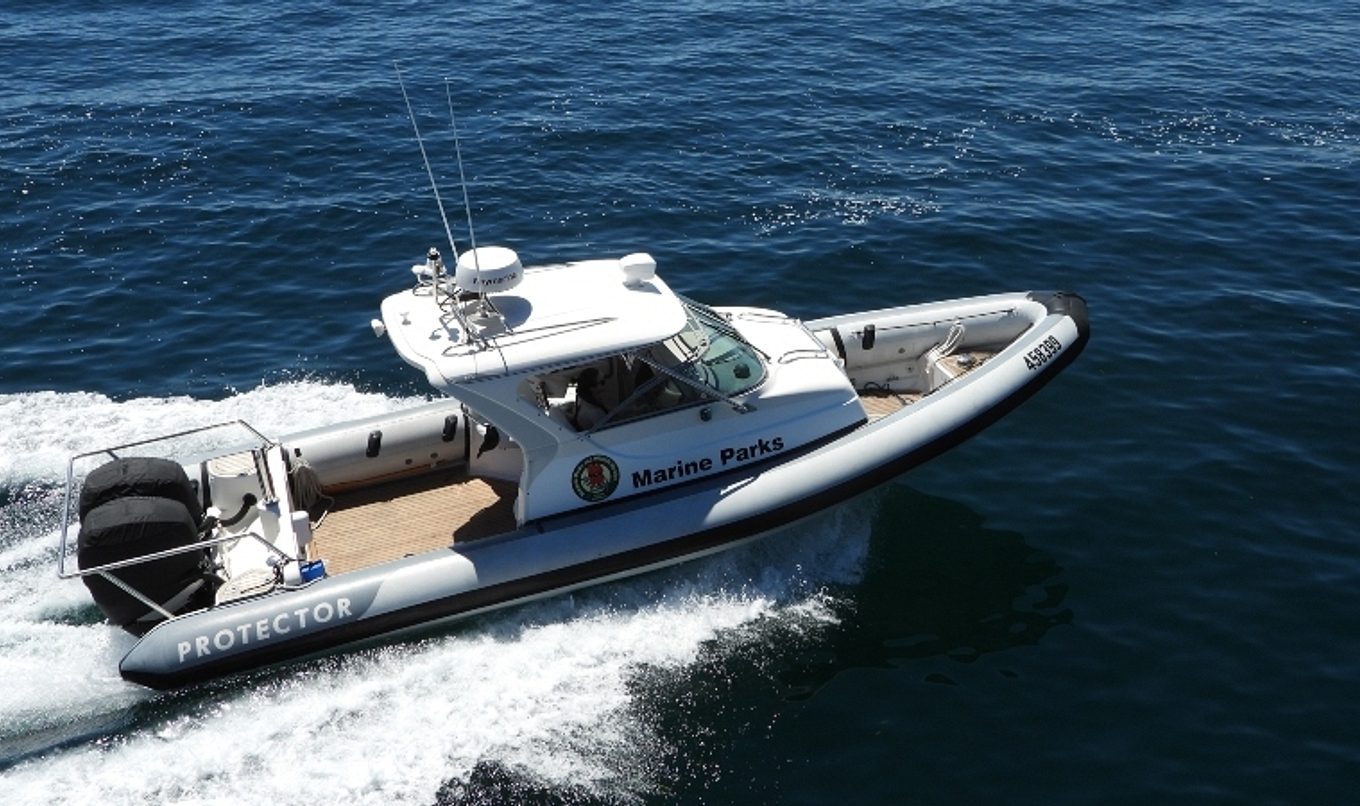New marine parks patrol vessel nets illegal fishing in sanctuary zones
A newly-acquired marine parks patrol vessel has delivered immediate results with rangers from National Parks and Wildlife Service SA (NPWSSA) successfully detecting illegal fishing activity in South Australian sanctuary zones.

In one recent incident involving the patrol boat, spearfishers were caught in the Sponge Gardens Sanctuary Zone having speared 35 reef fish, including the beautiful harlequin fish and blue groper. They had also collected over 200 shellfish.
NPWSSA Senior Ranger Darryl Cowan explained the new, long distance patrol vessel, Encounter II, enables rangers to patrol the most remote waters of our marine parks.
“The 8.5 metre, all-weather vessel has given us a much greater capability to identify compliance incidents in sanctuary zones and respond quickly, day or night,” Darryl said.
“The boat has been a great tool in our work protecting the state’s marine parks and the marine life they support.”
Mr Cowan said marine park sanctuary zones are like national parks in the sea.
“Fishing in a marine park sanctuary zone is no different to hunting in a national park. It interrupts the natural balance of the ecosystem. We want sanctuary zones to be natural areas, where nature can flourish,” Darryl said.
“There are currently 83 sanctuary zones across South Australia’s state waters, protecting approximately five per cent of our marine environment. Fishing in these zones has been illegal since October 2014”
“Unfortunately, we’ve recently observed a concerning number of fishing incidents within sanctuary zones particularly in the Encounter Marine Park, which wraps around the Fleurieu Peninsula coast and across to Kangaroo Island incorporating the Pages Islands.
“In the last few months alone, rangers have recorded over 100 compliance incidents in the Encounter Marine Park with a number of lobster pots and crab nets set in sanctuary zones, as well as catches of fish seized by NPWS rangers.
“Most incidents involve people who are well aware of marine parks and sanctuary zones, but failed to check their location. This is simply is not good enough and it’s is up to each individual to know the rules and follow them.”
Fishers caught in sanctuary zones risk fines, court proceedings, confiscation of equipment and even imprisonment.
Dr Simon Bryars, of the Marine Science team in DEW, said the reef fish are mostly long-lived, site-attached species with small home ranges, which means that if there is localised depletion of numbers from fishing then it may take a long time for their numbers to recover.
“That is why marine park no-take sanctuary zones are so important for the conservation of these species. However, sanctuary zones can only work if illegal fishing is prevented,” Dr Bryars said.
Mr Cowan said sanctuary zones have been in place for over eight years, so South Australian fishers should by now be very familiar with where they are located, and the rules that apply.
There are many tools available to help fishers know where the sanctuary zones are. Over 300,000 map books have been distributed, and the zoning is available on smartphone apps including SA Fishing and Deckee.
Most chart plotters on board vessels also now have the park boundaries and zones identified. The marine parks website also provides maps and coordinates in downloadable form at www.environment.sa.gov.au/marineparks

